Grimgar of Fantasy and Ash Review - The Beginner's Guide
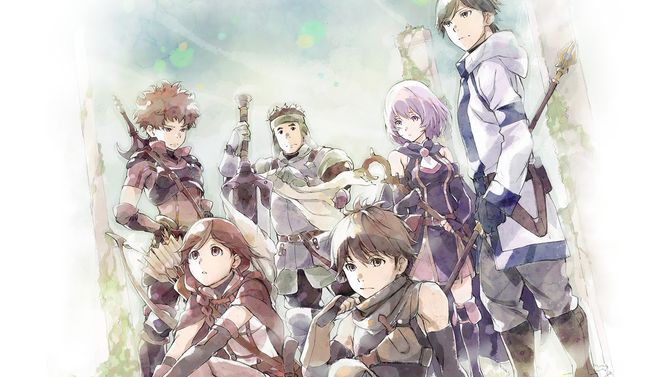
Stop me if you’ve heard this one before: a seemingly normal teenage boy is mysteriously and abruptly transported to a medieval fantasy setting in a parallel universe, and alongside a cast of colorful characters he begins his journey from square one in this new, fascinating and wonderful world he has stumbled upon.
If you’ve been watching anime for as long as I have, you’ve probably thought of no less than 93,162 shows that fit that description somehow. Some memorable ones over the past couple of years, for better or worse, include No Game No Life, SAO, Log Horizon, GATE, and just last year we had two remarkably good takes on it with Re:Zero and KonoSuba. Needless to say, the premise is starting to get a little worn, but to be fair, we’ve gotten a ton of mileage out of it.
I personally believe that there’s no such thing as a bad idea for an anime; everything has the potential to be good. Yes, even something as irredeemably terrible as Casshern Sins from last time. That too had the potential to be good; albeit for all of four nanoseconds, but it still hypothetically could have worked. That said, some ideas just work better as baselines than others do, and the “whisked away to another world” template just happens to be the flavor of the month.

Fanservice can compromise any stealth mission.
Now, just to be clear, there’s nothing inherently wrong with using a template to base your anime on. A good foundation that’s been tested over time will tend to be sturdier than one that sounds like a drunken mumbling over a conference phone (e.g. what if we tried doing a magical catgirl anime? Yes that existed, it was called Magical Meow Meow Taruto, and no, I’m not gonna review it). Point is, even if it seems like the anime industry is eating its own tail right now, it’s not due to a lack of creativity. Absolutely not. Rather, writers and artists are using the same baseline to jumpstart their own ideas, as that starting point has proven to be pretty stable for their predecessors.
The “transported to another world” template will run its course eventually, but until then, we have more than enough material to poke through. And today I wanted to look at a series that kinda got swept under the rug in the wake of the aforementioned 2016 lineup. It came out that winter and was called Grimgar of Fantasy and Ash, which is not the most uplifting name I’ve heard for an anime. Seriously, it’s three letters and a preposition off from Grim Fantasy and Ash; don’t tell me you weren’t thinking the same thing.
The good news is that, despite the slightly unsavory name, Grimgar just happens to be the name of the world we’ve been transported to, and much like KonoSuba, our protagonists are a plucky band of adventurers out to make money and seek fame. Alright, Grimgar. My apologies for the bad first impression. You don’t look nearly as depressing as I initially thought. Please continue!
At that point I probably should’ve noticed Grimgar awkwardly shuffling towards the door and fidgeting with the handle, because then it kicked off with a cold-open fight scene where my hopes were immediately squashed. You remember that one scene from Re:Zero where Subaru fought Julius and got his ass royally served with a side of potato salad?
Well, picture that, only with six Subarus of varying RPG classes and instead of fighting a knight with decades of military experience, they’re struggling to deal with a level 1 goblin.
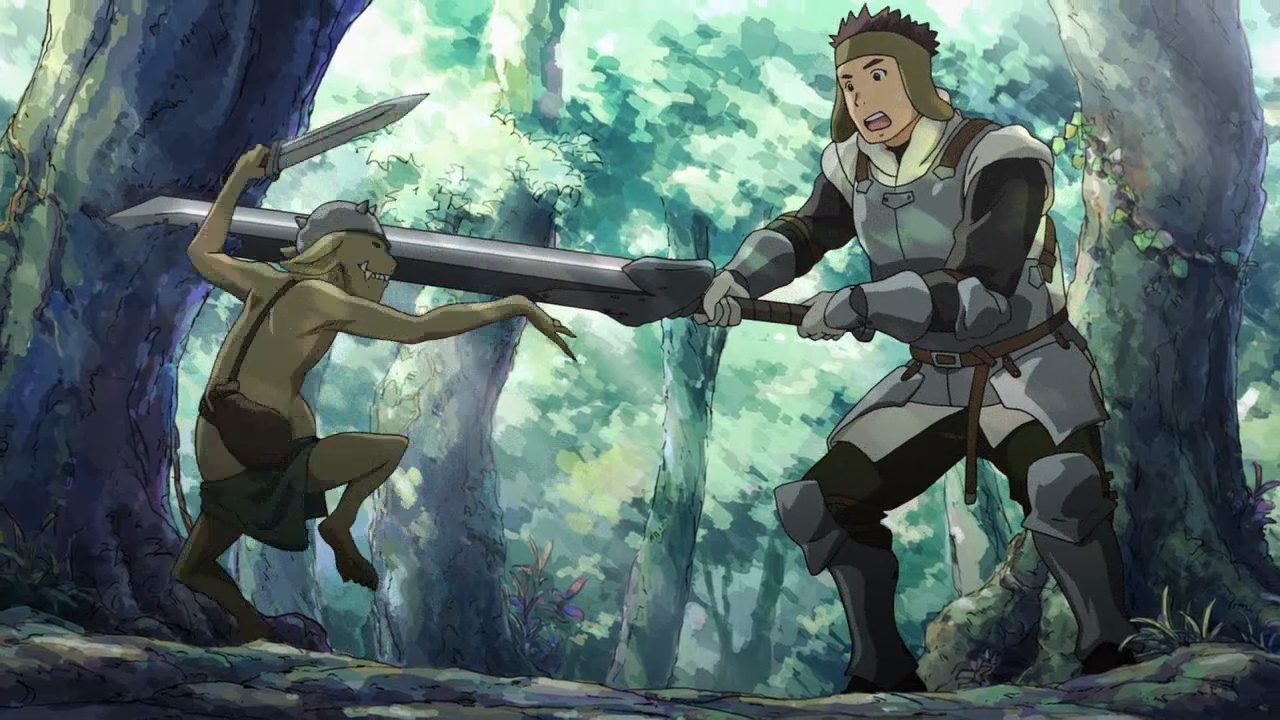
A proud graduate from the Darkness School of Sword Fighting.
Our leads are incredibly inept at their jobs. We have the death dark knight (pardon the WoW) who won’t stop pulling things without his group, the warrior who can’t hit a thing to save his life, the hunter who routinely forgets friendly fire is turned on, and the mage who needs around six seconds to cast Magic Missile. That leaves the thief, Haruhiro (trust me, that’s about the only name you’ll remember), and the priest as the only ones who kinda seem to know what they’re doing, but they’re hampered by the fact they are situational at best in battle.
For Grimgar, the emphasis is more on the journey than the actual destination, and it does a decent job in telling us about it. None of these characters have any special skills or do anything to make them stand out in a crowd. While a lot of fantasy anime focus on one individual person or team and tend to glamorize them and their skills, Grimgar completely removes the veil and presents us with a team that does nothing outstanding and is struggling to get by.
It’s actually a pretty refreshing take on the genre, as bland as that description sounds. I’m writing this review after finishing my rewatch of Madoka Magica, and thinking back, the two series are not too different from each other. Both are taking a well-established premise that’s been done multiple times in the past, and putting their own unique spins on it. Madoka was a well-executed dark, morbid take on the twee innocence that was magical girls; that stark contrast between the subject matter and its tone was one of the major reasons it did so well. Grimgar seeks to do something similar for the fantasy adventuring company: we’re not following any renowned heroes, or even mercenaries that are okay at their jobs but not the best.
Because remember, we are spectating the saddest game of Dungeons & Dragons ever orchestrated by man.
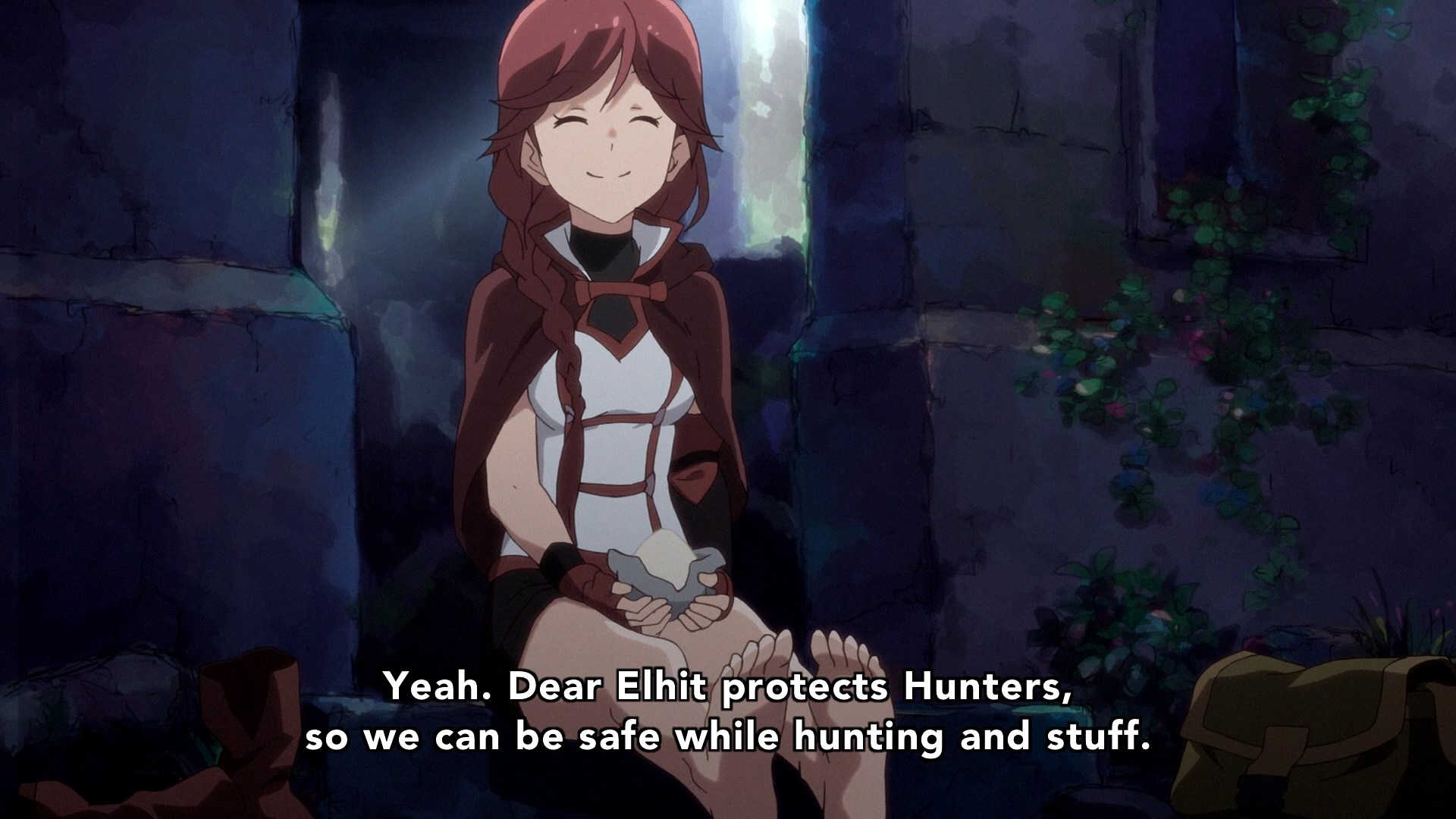
“As for the rest of you, I apologize in advance if I turn you into a unicorn."
And while our band of misfits does fall into the cycle of “kill monsters, sell loot, go home, rinse and repeat,” as you might expect, the fact that they all suck means that they can only venture into areas suitable for their skill levels. That in turn permits us ample time to get to know our cast as they plan dungeon runs and travel the world. Much like characters in an RPG, the six leads in Grimgar all have their own personality quirks and talents to make them unique. But since one of the plot points involves everybody not remembering their old life back home, we have zero backstory on them and hence the only way to get these characters to shine properly is to get them to interact with the others.
So how does that go, then? Not bad, for the most part anyways. At the risk of maybe spreading itself too thin in pursuing its goal, Grimgar decides to focus more on the relationships between Haruhiro (Yoshimasa Hosoya) and the rest of his party, as opposed to maybe trying to dissect everyone’s relations with everyone else. Apart from getting involved in the standard fare anime gags, up to and including sneaking into the girls' bathhouse, he’s effectively the second-in-command for the group next to the priest. He’s respectful, sensitive, and even though he is arguably the most average person in the party when comes to fighting, most of the things he does happen off of the battlefield, as the others find him very easy to talk to.
With as much talking as this show does, the writing has to be on point in order for us to relate to our characters. As far as the spoken dialogue is concerned, Grimgar does not disappoint. Within a few lines of dialog at the party’s base camp, we get a good idea of what everyone’s main personality traits are - the priest is a leader with a good tactical mind, the death dark knight is a selfish troublemaker who likes finding opportunities to further his skills, the warrior is a slightly slow-witted but kind-hearted protector who knows a few things about cooking. And none of this is shoved down our throats either, which is actually pretty impressive. This is organic storytelling done right, and by halftime in the first episode, I already knew everything about the characters and what they do.
So when Haruhiro goes around to each of them individually and gets into some pretty deep talks about the lives they used to lead and what they think of the ones they have now, they feel earned. No ham-fisted lines, no awkward character shifts or scene transitions. And, well, I just happen to be a sucker for good writing in anime, so Grimgar gets a thumbs-up there.
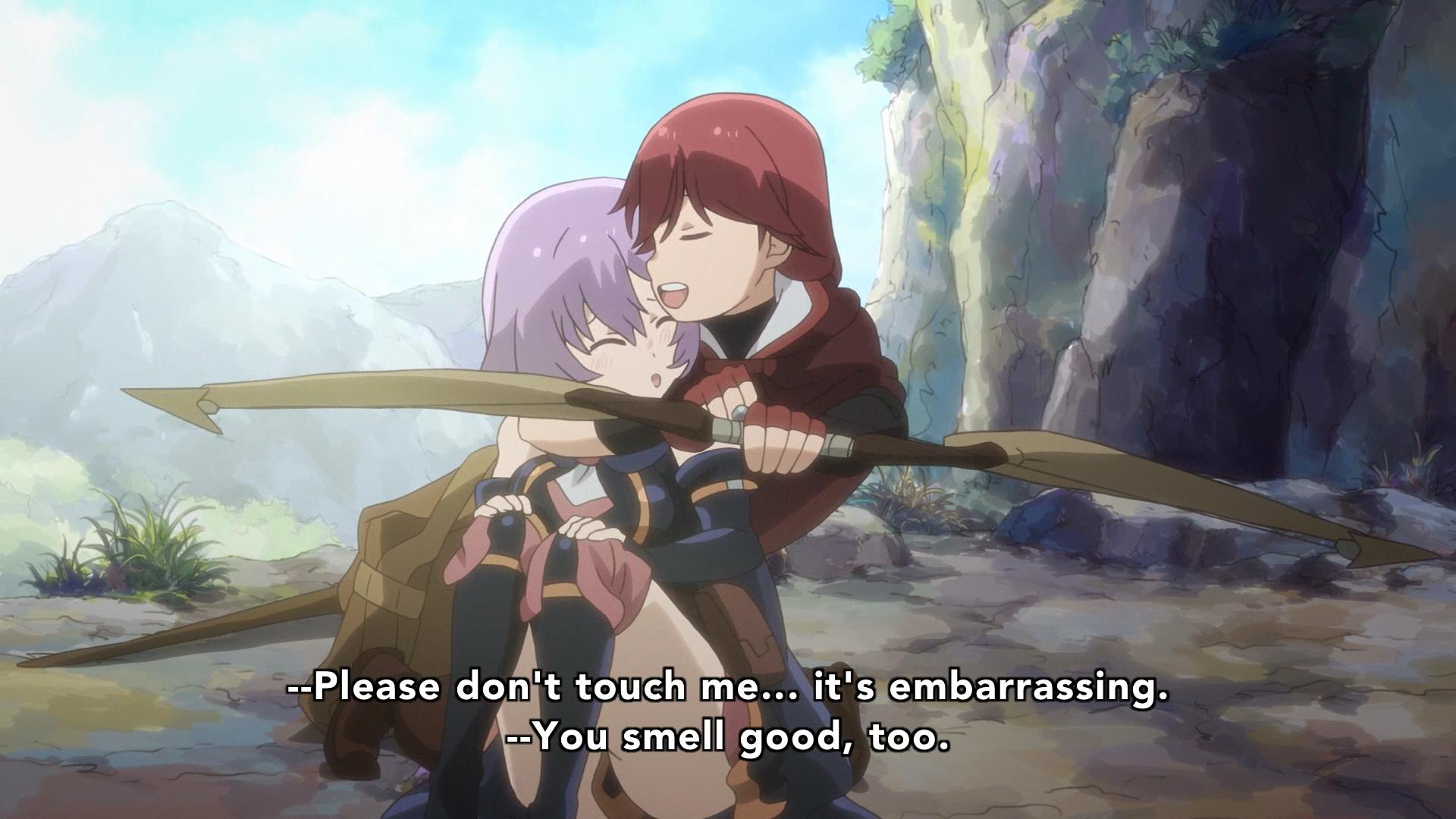
Yes, that bow is drawn and ready to fire. As we all know, safety is second only to yuri.
All that said, Grimgar misses out on a few very viable opportunities to develop these characters even more. One remarkably bad drop happens in Episode 2, where the death dark knight finally lands a killing blow on a goblin and ends up brutalizing it to the shock of his party, all so he could learn a new (and kinda inconsequential) skill from his trainer. Even Haruhiro, who actively participated in the fight as well, is shaken over the fact he just drew first blood against something, and he even mentions the hand holding his knife refusing to open for him.
And damn, if that doesn’t sound like a good plot hook there! Maybe the death dark knight becomes more reclusive and shut-in, his bravado being the only way he can mask his trauma and regrets from the rest of his party. Haruhiro could come in and have one of those solid, philosophical talks with him; maybe things hit a boiling point and an already fractured team could be divided more over a goblin and the three copper coins he was carrying. That sounds sweet!
But one montage later of the party poking around in a market, Haruhiro asks if he’s feeling any better and the death dark knight just stands right back up, dusts his sword off and asks where they’re going next. What really gets to me there isn’t that they missed the window, but the fact that they suggested some characters might be subject to bouts of PTSD and then completely shoved it off to the side like it didn’t even happen. Those scenes are not easy for the audience to forget, and if Grimgar was going to do this, then they were probably better off cutting this idea out of the episode altogether. As is, it’s a very loose plot string that doesn’t get tied off properly before the episode ends.
The series is all over the place tonally as well. It feels like Grimgar was trying to split the difference between Konosuba’s wacky and chaotic spirit and Re:Zero’s more serious, straight-faced approach. But instead of sitting in the middle of the spectrum and staying there, it instead bounces back and forth between the two extremes, and that’s how we ended up with the aforementioned goblin brutality during the middle of what was otherwise a pretty amusing and borderline silly fight. I’d probably be more forgiving if the series blended these scenes better into the actual story - even Re:Zero knew it needed a little comic relief every now and again - but these abrupt shifts are jarring on a first viewing and I don’t blame you if you decide to drop this one on that basis alone.
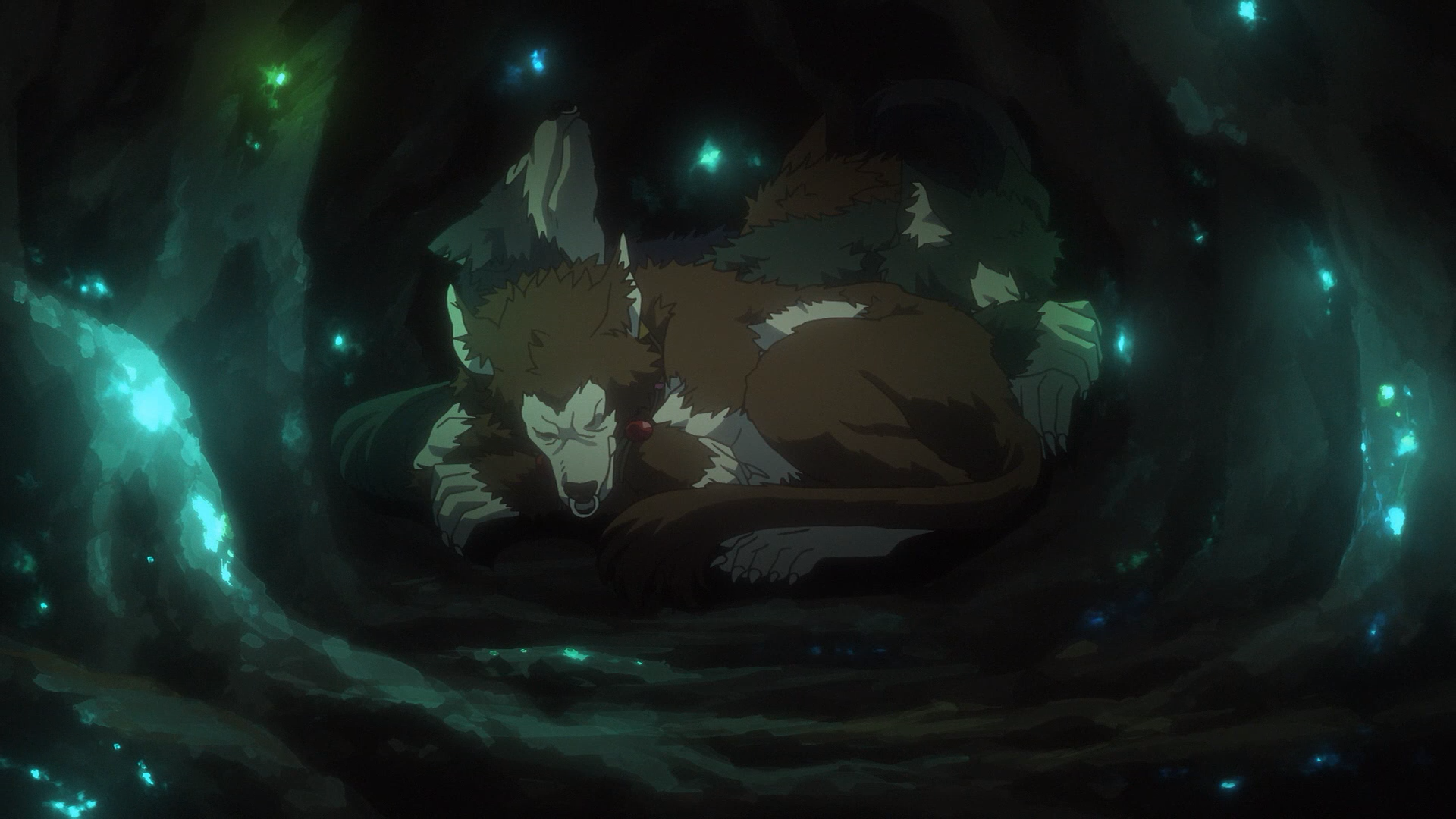
D’awwww… I mean, ahh! Pack of doggos! Kill them all!!
For the rest of you, Grimgar is not that bad. If you’re willing to overlook the show’s significant shortcomings and pitfalls, and you think the premise is clever considering the template it used, then you can do far, far worse than this. You will not feel like you’ve wasted your time.
Backhanded complements aside though, I enjoyed my time with Grimgar for the most part. By no means is it the best series to come out of this “genre,” but I sure as hell would never call it a bad anime outright. Again, it shines when it’s focusing on the characters, and letting Haruhiro act as a catalyst for their arcs is a pretty smart move. I wish the arcs were a little more substantial and that A-1 Pictures didn’t muff the potentially good ones as badly as they did, but when Grimgar is clicking and showing off its great writing and impressive, stylistic watercolor art, it comes into its own as a unique little show worth checking out at some point.
That opening fight, however… I had to lie down and think about my life after seeing that.
THE VERDICT: B
Next time: I say something potentially controversial.